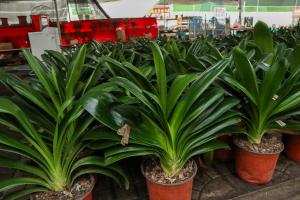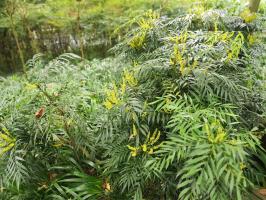Introduction
The plant cell wall is a protective layer that surrounds cells in the plant kingdom. It is a vital structure that provides support, prevents excessive water loss, and protects cells from pathogen attack. But what is the plant cell wall made of?
Cellulose: The Primary Component
The primary component of the plant cell wall is cellulose. Cellulose is a complex carbohydrate, also known as a polysaccharide, consisting of long chains of glucose molecules. These chains are bound together by hydrogen bonds, forming microfibrils. Microfibrils are then arranged together in a way that forms a mesh-like structure, creating the rigid structure of the cell wall.
Hemicellulose
In addition to cellulose, the plant cell wall contains other polysaccharides, including hemicellulose. Hemicellulose is a class of polysaccharides that is chemically similar to cellulose but has a different structure. It contains a variety of monosaccharides, including xylose, glucose, mannose, and galactose. Hemicellulose is typically present in smaller amounts than cellulose but is still important for the overall structure and function of the cell wall.
Lignin
Another component of the plant cell wall is lignin. Lignin is a complex polymer that provides additional structural support to the plant cell wall. It is an extremely strong and stable compound, making it an important player in the plant's defense against pathogens and environmental stressors. Lignin is also responsible for the woody texture of tree trunks and the durability of some plant fibers.
Pectin
Pectin is another polysaccharide present in the plant cell wall, but it plays a slightly different role than cellulose and hemicellulose. Pectin is a gel-like substance that helps to hold plant cells together. It is most abundant in the middle lamella, which is the layer between adjacent plant cells. Pectin molecules are highly negatively charged, giving them the ability to bind with positively charged ions and hold water molecules, creating a hydrated gel-like substance.
Conclusion
In conclusion, the plant cell wall is composed of a complex mixture of molecules, including cellulose, hemicellulose, lignin, and pectin. These molecules work together to create a highly structured and protective layer around plant cells. Understanding the composition and function of the plant cell wall is important for improving agricultural practices and developing new plant-based materials.

 how many times do yo...
how many times do yo... how many planted tre...
how many planted tre... how many pine trees ...
how many pine trees ... how many pecan trees...
how many pecan trees... how many plants comp...
how many plants comp... how many plants can ...
how many plants can ... how many plants and ...
how many plants and ... how many pepper plan...
how many pepper plan...






























